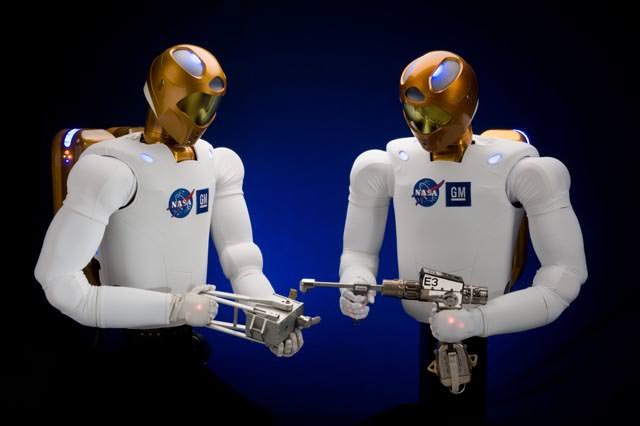[/caption]
Not sure if it speaks Bocce or understands the binary language of moisture evaporators, but the next generation of NASA's Robonaut is about to move into the workforce in the automotive and aerospace industries. Engineers and scientists from NASA, General Motors and Oceaneering Space Systems of Houston have worked together to build a new humanoid robot capable of working side by side with people. Robonaut 2, or R2, is a faster, more dexterous and more technologically advanced robot than its predecessor, and this next generation robot can use its hands to do work beyond the scope of prior humanoid machines. R2 can work on Earth or in space.
"This cutting-edge robotics technology holds great promise, not only for NASA, but also for the nation," said Doug Cooke, NASA's associate administrator for the Exploration Systems Mission Directorate. "I'm very excited about the new opportunities for human and robotic exploration these versatile robots provide across a wide range of applications."
Using leading edge control, sensor and vision technologies, future robots could assist astronauts during hazardous space missions and help GM build safer cars and plants.
[caption id="attachment_54138" align="alignnone" width="580" caption="R2 reaches for the stars? Credit: NASA"]
[/caption]
"For GM, this is about safer cars and safer plants," said Alan Taub, GM's vice president for global research and development. "When it comes to future vehicles, the advancements in controls, sensors and vision technology can be used to develop advanced vehicle safety systems. The partnership's vision is to explore advanced robots working together in harmony with people, building better, higher quality vehicles in a safer, more competitive manufacturing environment."
The original Robonaut, a humanoid robot designed for space travel, was built about 10 years ago at Johnson Space Center. During the past decade, NASA gained significant expertise in building robotic technologies for space applications. Will these new robots go to galaxies far, far away and be grease monkeys? Only time will tell.
Source:
NASA
 Universe Today
Universe Today
